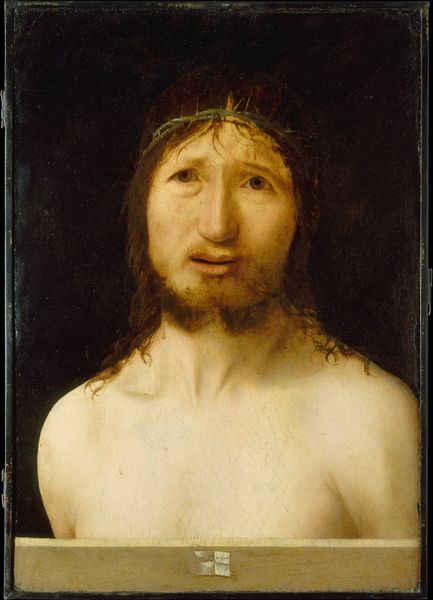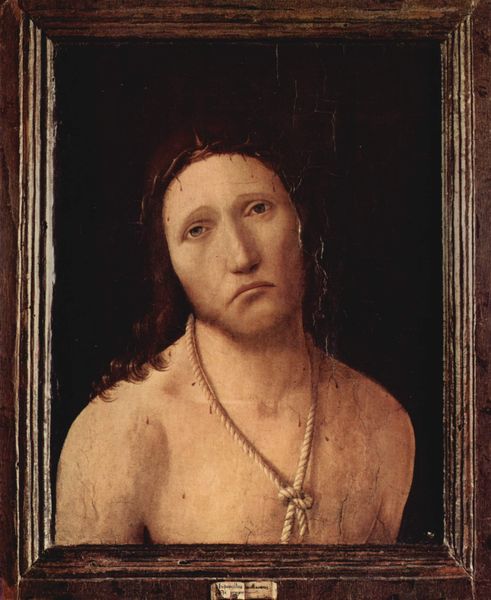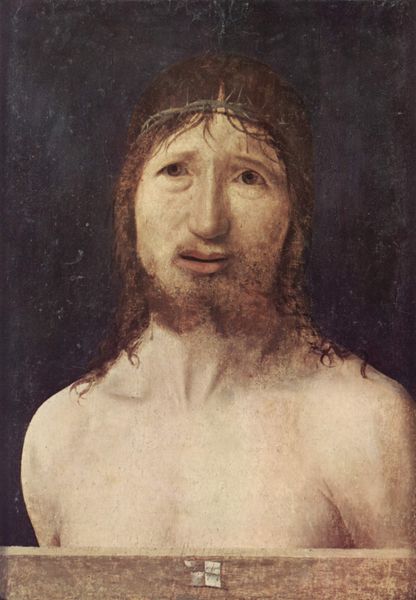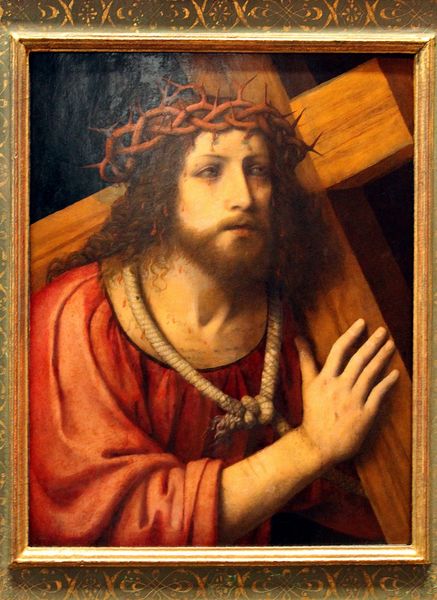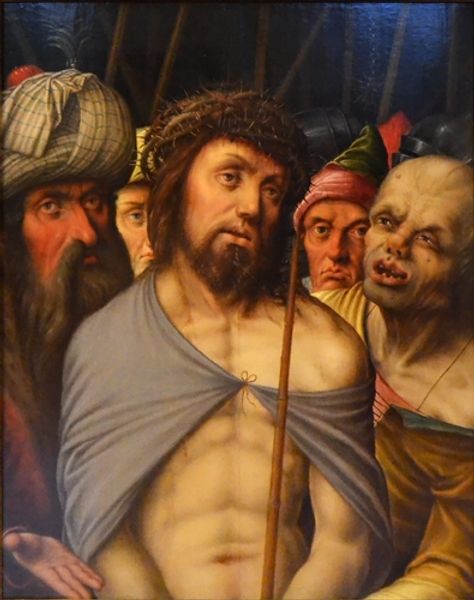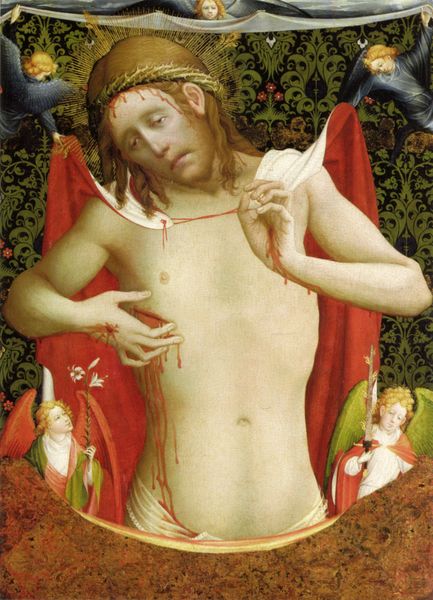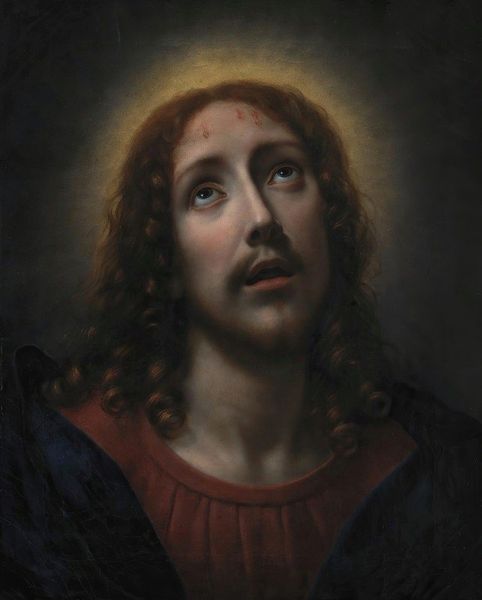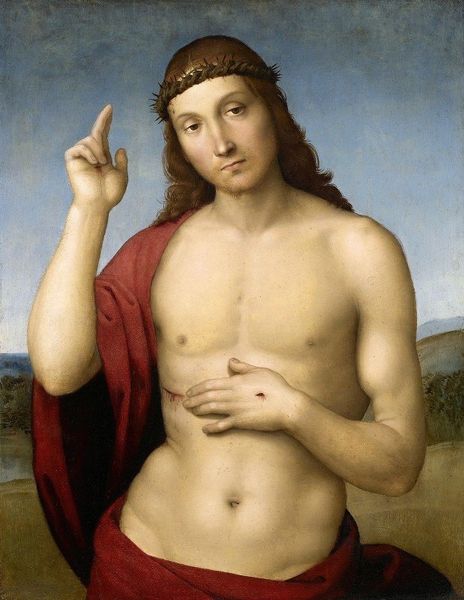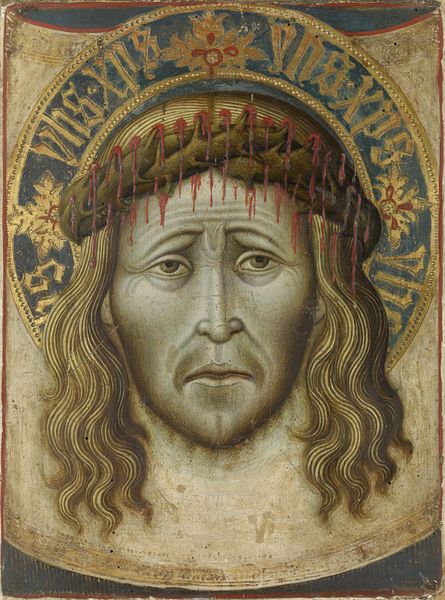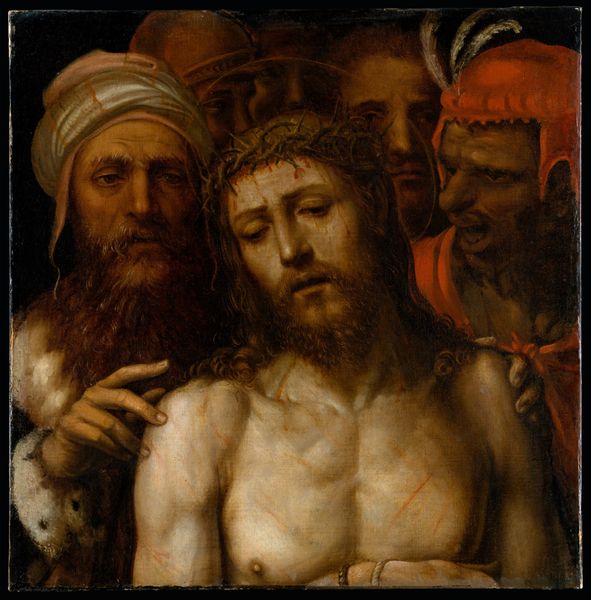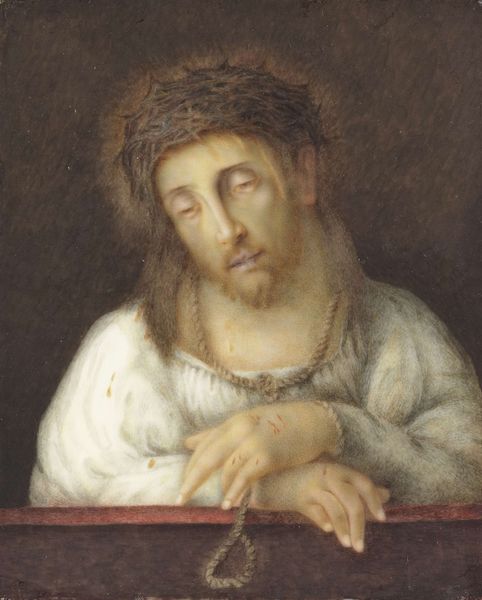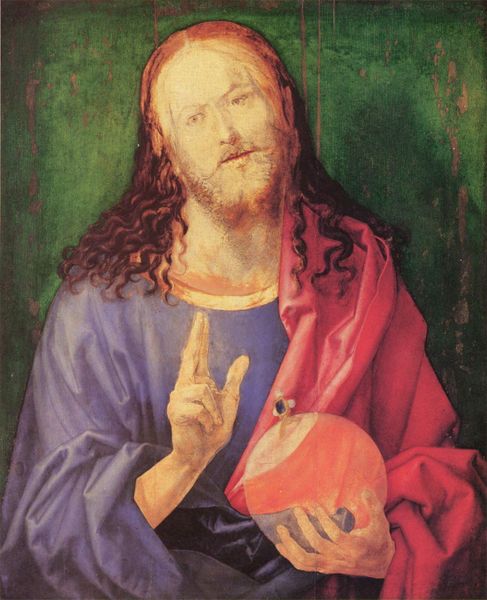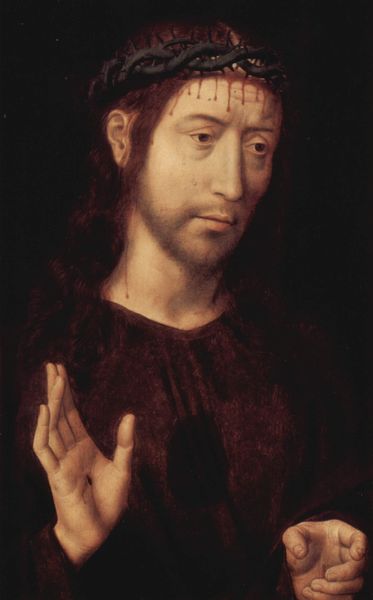
painting, oil-paint
#
portrait
#
medieval
#
painting
#
oil-paint
#
jesus-christ
#
portrait reference
#
christianity
#
history-painting
#
italian-renaissance
#
christ
Dimensions: 48.5 x 38 cm
Copyright: Public domain
Curator: This striking work is Antonello da Messina's "Ecce Homo," painted around 1473, and currently residing in the Collegio Alberoni in Piacenza. The oil paint lends the subject's suffering an almost palpable quality. Editor: My first impression is just how stark it is. The figure fills almost the entire space, making it feel intimate yet undeniably sorrowful. The rawness of the exposed wood bordering the scene only amplifies that sense. Curator: Indeed, Messina masterfully used oil paint to create that raw, textured surface. Considering oil painting's recent arrival in Italy at the time, it highlights Messina's experimental approach and knowledge of Northern European techniques, likely gleaned through trade and cultural exchange. It emphasizes the artistic process, and that’s fundamental to my appreciation of the work. Editor: Absolutely. And if we consider the iconography, we see the 'Ecce Homo'—'Behold the Man'—as a powerful symbol of suffering and sacrifice within Christian art. The crown of thorns, the rope... they aren't merely physical objects. They represent profound theological ideas. The image has become, in effect, shorthand for Christ’s Passion. Curator: But look closer. That rope is tied so simply. That crown seems almost…crude. They underscore not just religious symbolism, but very immediate human elements. The artist is rendering objects involved in human suffering in a tangible way. Consider how this deviates from earlier, more stylized depictions, perhaps to reach a wider audience. Editor: A crucial point! Think about the long history of this image! It appears across centuries, adapted to countless cultural contexts, speaking to shared understandings of pain, empathy, even political power. Seeing those same symbolic elements reworked is a stark reminder of art's role as a conveyor of cultural memory. Curator: I’m left thinking about Messina himself and his access to such precious materials at this time in Italy. Oil paints would have involved very specific labor. His access speaks volumes. Editor: And for me, it highlights art's power to distill such complex narratives and emotions into single, lasting images that continue to resonate across generations.
Comments
No comments
Be the first to comment and join the conversation on the ultimate creative platform.
